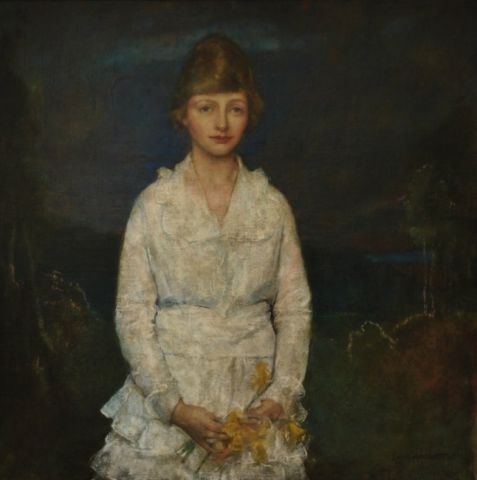Written by Jocelyn Boigenzahn, Curatorial Intern
Charles Webster Hawthorne was an American portrait and genre painter and a noted teacher who founded the Cape Cod School of Art in Provincetown, MA in 1899. He was born in Illinois, but raised in Maine. He studied painting under several notable artists at the National Academy of Design and the Art Students League. Hawthorne declared that the most dominant influence in his career was William Merritt Chase. Both men were naturally talented teachers and figurative painters who were drawn to rich color and the lusciousness of oil paint as a medium.

Charles Webster Hawthorne (American, 1872 – 1930), April, c. 1918-1920, oil on canvas, 39 5/8 x 40 in., Gift of Raymond J. and Margaret Horowitz, AG.2009.3.1.
This portrait demonstrates Hawthorne’s interest in combining elements of realism, while keeping Monet’s style and the glow of Impressionism, differentiating between color and tone and to re-create the illusion of light in new ways. We see the a summation of Hawthorne’s unique style in this portrait with the rich blue tones of the background and the impressionistic-like light changes in the dress of the young woman named April.
Content with more rural life than that of William Merritt Chase and his New York art circles, Hawthrone broaden the subject matter of American Impressionism to include the rural and earthy world outside of big metropolitan centers. By 1916, the historic fishing village of Provincetown had become the largest art colony in the world luring such artists as George Ault, Gifford Beal, Reynolds Beal, Henry Demuth, Childe Hassam, Ernest Lawson, and William Zorach to its shores. According to historian Ronald A. Kuchta, “Provincetown is the origin of many famous paintings in the history of the twentieth-century American art.”


